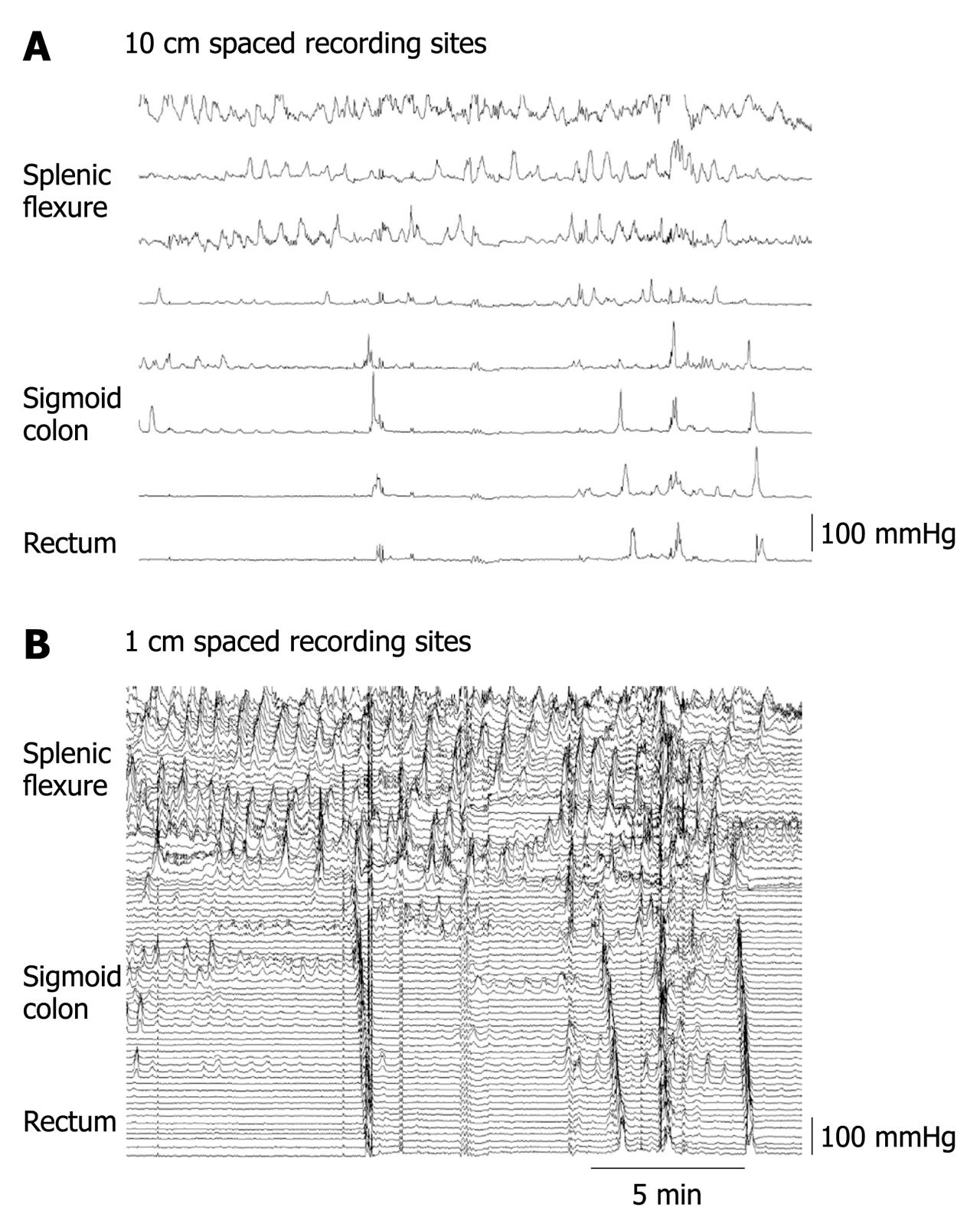Copyright
©2010 Baishideng Publishing Group Co.
World J Gastroenterol. Nov 7, 2010; 16(41): 5162-5172
Published online Nov 7, 2010. doi: 10.3748/wjg.v16.i41.5162
Published online Nov 7, 2010. doi: 10.3748/wjg.v16.i41.5162
Figure 5 Manometric traces of colonic motor activity recorded by a fibre-optic manometry catheter with 90 sensors spaced at 1 cm intervals.
A: To represent common sensor spacing for current published colonic recordings, the data set, obtained through “high resolution” manometry, is sub-sampled to present every 10th channel (10 cm spacing, top); B: The complete data set, captured at 1 cm intervals, is displayed at the bottom. Note that at 10 cm spacing, the most proximal three channels reveal what appears to be non-propagating pressure waves. However, when the full data set is viewed (B), a series of short-extent retrograde propagating events are detected. These events are missed when spatial resolution is poor. Modified from[41].
- Citation: Dinning PG, Benninga MA, Southwell BR, Scott SM. Paediatric and adult colonic manometry: A tool to help unravel the pathophysiology of constipation. World J Gastroenterol 2010; 16(41): 5162-5172
- URL: https://www.wjgnet.com/1007-9327/full/v16/i41/5162.htm
- DOI: https://dx.doi.org/10.3748/wjg.v16.i41.5162









